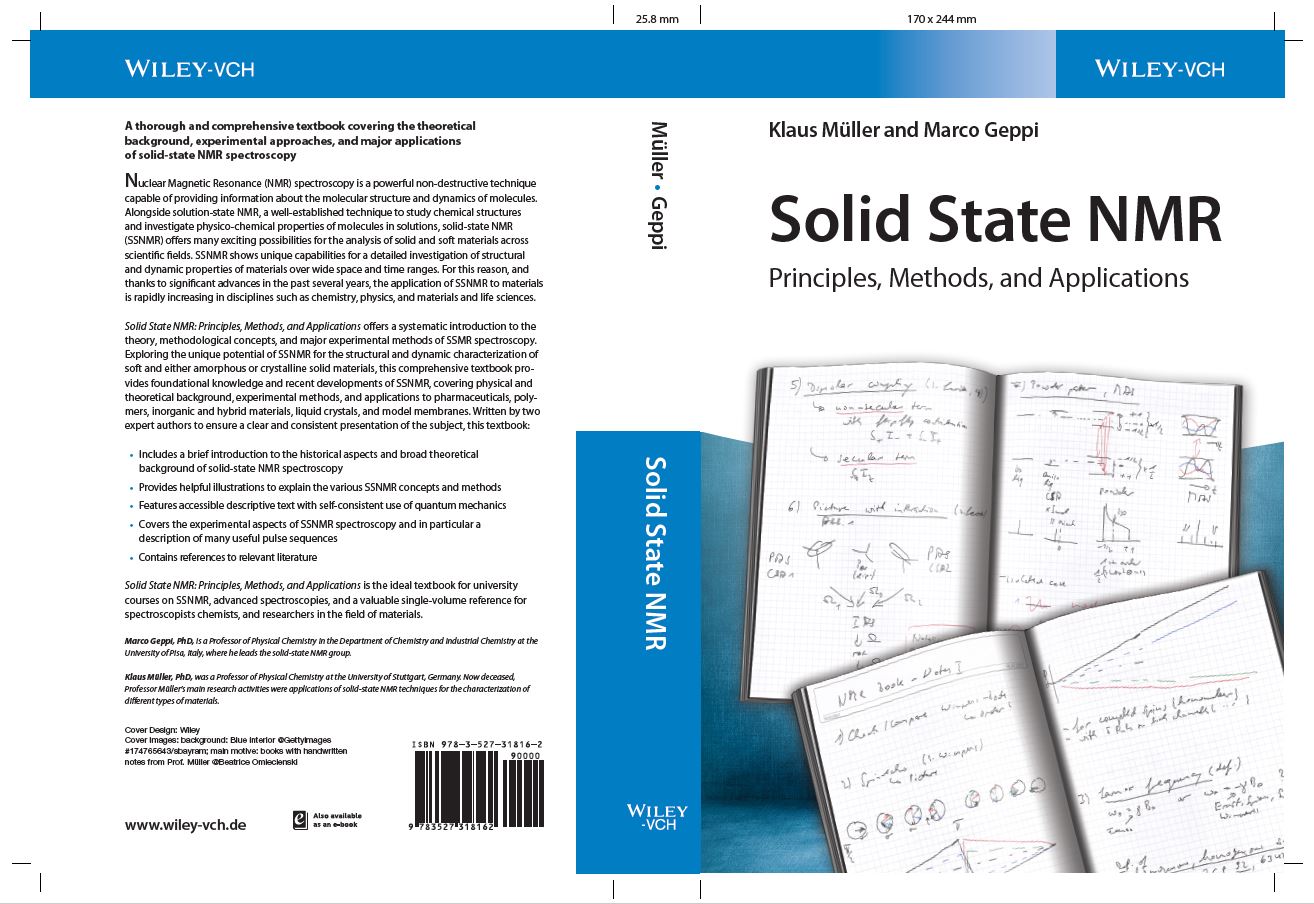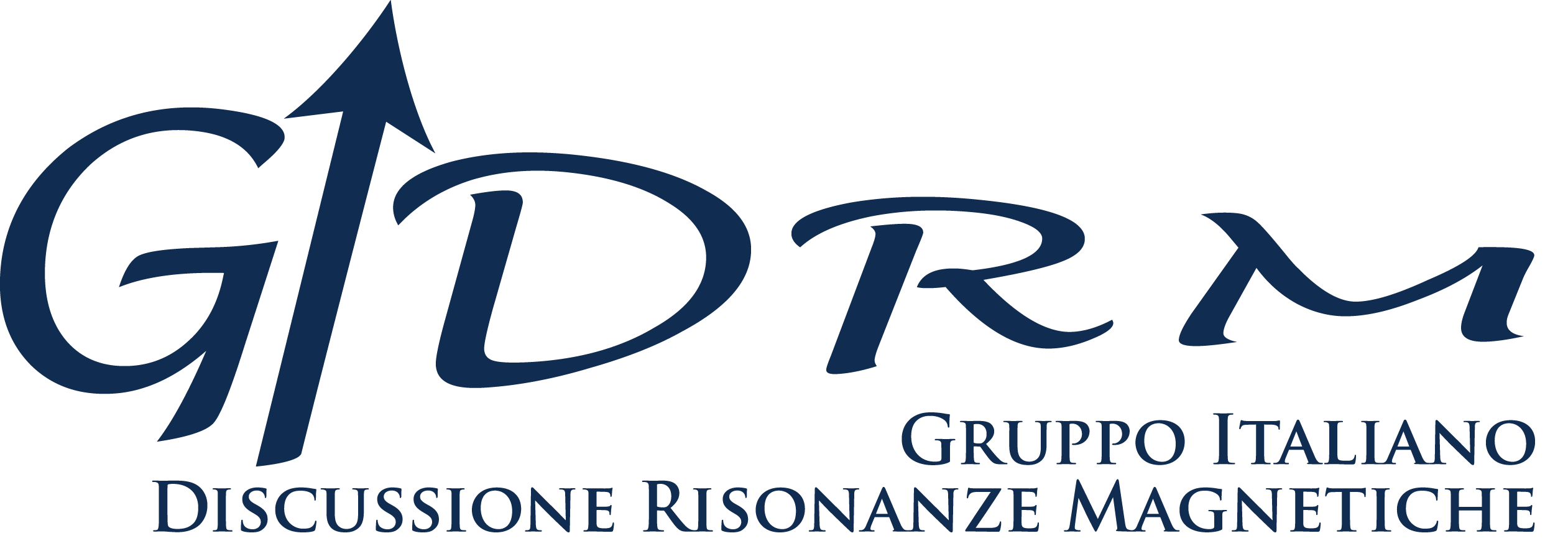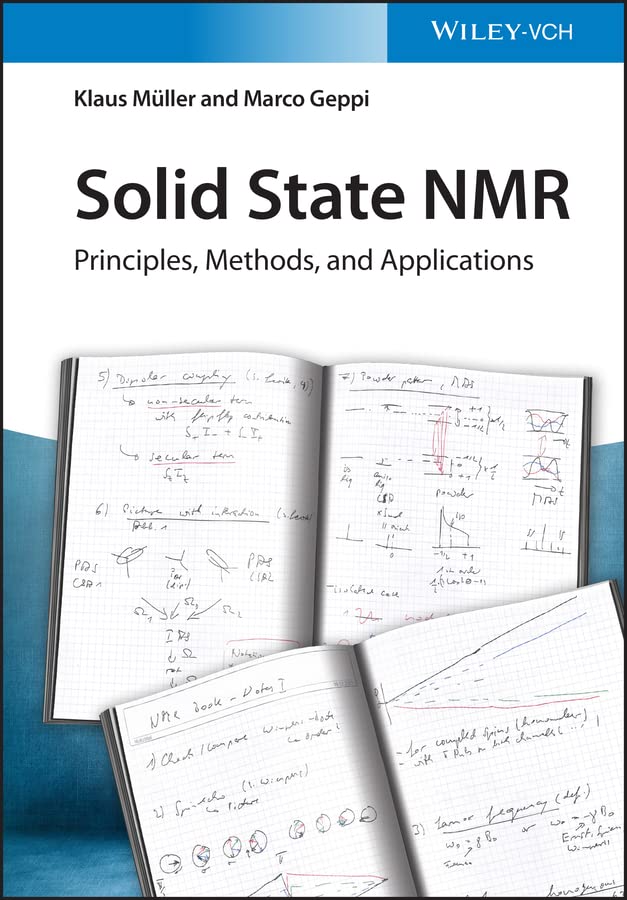Il 28 luglio 2021 è stato pubblicato da Wiley il libro “Solid State NMR: Principles, Methods, and Applications”, di Klaus Müller e Marco Geppi. Il libro nasce originariamente da un progetto di Klaus, che purtroppo improvvisamente e a soli 55 anni ci lascia nel 2011, lasciando anche il suo progetto ad uno stadio di sviluppo intermedio. Negli anni successivi la famiglia e i collaboratori di Klaus affidano a Marco Geppi il compito di terminare il libro con il prezioso supporto di Beatrice Omiecienski che ne cura le figure. Oggi l’uscita del libro è anche occasione per ricordare con affetto, a 10 anni dalla sua scomparsa, Klaus, che, oltre ad essere legato a Marco da un rapporto di amicizia che durava da molti anni, nel 2009 si era trasferito a Trento ed era entrato a far parte della comunità del GIDRM.
Scheda Dati
| Autore | Klaus Müller and Marco Geppi |
| Lingua | Inglese |
| Editore | Vch Pub |
| ISBN | 978-3527318162 |
| Formato | 17×24 |
| N. Pagine | 539 |
| Anno Pubblicazione | 2021 |
| Copertina | Morbida |
Ulteriori Informazioni
Il libro si rivolge a ricercatori nell’ambito delle risonanze magnetiche, ma anche in altri settori scientifici ed interessati alle applicazioni dell’NMR a stato solido, nonché agli studenti universitari.
Contiene i seguenti argomenti:
1. Introductory NMR concepts
1.1 Historical aspects
1.2 Basic Description of NMR Spectroscopy
1.3 Liquid-state NMR Spectroscopy: basic concepts
1.4 Liquid-state NMR Spectroscopy: some experiments
1.5 Solid Materials and NMR Spectroscopy
2. Mathematical and Quantum-Mechanical Tools
2.1 Definitions and basic concepts
2.2 Rotations and frame transformations
2.3 Time-independent features: energy levels and related aspects
2.4 Dealing with time-dependence
3. Nuclear Spin Interactions
3.1 Introduction
3.2 Interaction with external magnetic fields
3.3 Internal Interactions
4. Broadline NMR Spectroscopy
4.1 Introductory remarks
4.2 Finite pulse duration and adiabatic pulses
4.3 Inhomogeneous and homogeneous interactions/line broadening mechanisms
4.4 Dilute spin-½ nuclei
4.5 Abundant Spin-½ Nuclei
4.6 Quadrupolar Nuclei
5. 1D high resolution solid-state NMR Spectroscopy
5.1 Dilute Spin-½ Nuclei
5.2 Abundant Spin-½ Nuclei
5.3 Quadrupolar Nuclei
6. 2D solid-state NMR Spectroscopy
6.1 Basic concepts
6.2 Experiments based on chemical shift anisotropy
6.3 Experiments based on heteronuclear dipolar coupling
6.4 Experiments based on homonuclear dipolar coupling
6.5 Experiments based on J-coupling
6.6 Experiments based on quadrupolar interaction
7. Molecular dynamics by solid state NMR
7.1 Experimental observables
7.2 Motional models
7.3 Broadline experiments
7.4 High resolution experiments
8. Application of SSNMR to selected classes of systems
8.1 Pharmaceuticals
8.2 Polymeric materials
8.3 Inorganic and organic-inorganic materials
8.4 Liquid crystals and model membranes”

Dalla quarta di copertina
A thorough and comprehensive textbook covering the theoretical background, experimental approaches, and major applications of solid-state NMR spectroscopy
Nuclear Magnetic Resonance (NMR) spectroscopy is a powerful non-destructive technique capable of providing information about the molecular structure and dynamics of molecules. Alongside solution-state NMR, a well-established technique to study chemical structures and investigate physico-chemical properties of molecules in solutions, solid-state NMR (SSNMR) offers many exciting possibilities for the analysis of solid and soft materials across scientific fields. SSNMR shows unique capabilities for a detailed investigation of structural and dynamic properties of materials over wide space and time ranges. For this reason, and thanks to significant advances in the past several years, the application of SSNMR to materials is rapidly increasing in disciplines such as chemistry, physics, and materials and life sciences.Solid State NMR: Principles, Methods, and Applications offers a systematic introduction to the theory, methodological concepts, and major experimental methods of SSMR spectroscopy. Exploring the unique potential of SSNMR for the structural and dynamic characterization of soft and either amorphous or crystalline solid materials, this comprehensive textbook provides foundational knowledge and recent developments of SSNMR, covering physical and theoretical background, experimental methods, and applications to pharmaceuticals, polymers, inorganic and hybrid materials, liquid crystals, and model membranes. Written by two expert authors to ensure a clear and consistent presentation of the subject, this textbook:
- Includes a brief introduction to the historical aspects and broad theoretical background of solid-state NMR spectroscopy
- Provides helpful illustrations to explain the various SSNMR concepts and methods
- Features accessible descriptive text with self-consistent use of quantum mechanics
- Covers the experimental aspects of SSNMR spectroscopy and in particular a description of many useful pulse sequences
- Contains references to relevant literature
Solid State NMR: Principles, Methods, and Applications is the ideal textbook for university courses on SSNMR, advanced spectroscopies, and a valuable single-volume reference for spectroscopists, chemists, and researchers in the field of materials.
L’autore
Marco Geppi, PhD, is a Professor of Physical Chemistry in the Department of Chemistry and Industrial Chemistry at the University of Pisa, Italy, where he leads the solid-state NMR group.Klaus Müller, PhD, was a Professor of Physical Chemistry at the University of Stuttgart, Germany. Now deceased, Professor Müller’s main research activities were applications of solid-state NMR techniques for the characterization of different types of materials.

